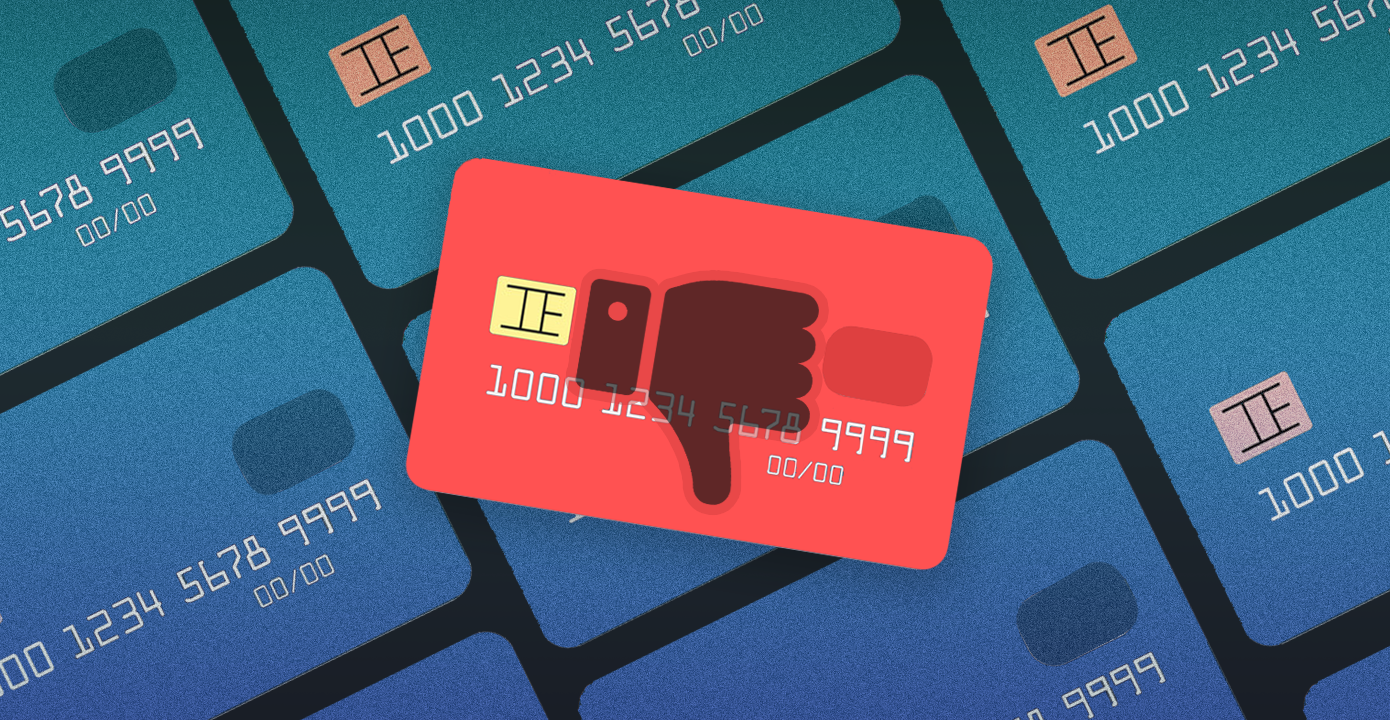
The Worst Credit and Debit Cards of All Time — and What We Can Learn
Editorial Note: Any opinions, analyses, reviews, or recommendations expressed on this page are those of the author’s alone, and have not been reviewed, approved, or otherwise endorsed by any card issuer.
The hit 2018 movie The Disaster Artist took a hysterical look at the making of the 2003 movie The Room, which is widely considered to be one of the worst movies ever made. The Room is so bad that it’s become a popular watch...just to make fun of its poor production values, nonsensical script, and comically wooden acting.
Likewise, those who follow the credit and debit card industries love to look back at some of its epic failures. We can take pleasure in the well-deserved failures of overhyped products that offered poor value — to learn what to avoid in the future, of course.
If you've watch the early 2019 Amazon and Hulu documentaries on #FyreFest, then already know something about this card or, at least, its founder. The Magnises card was offered in 2013 by entrepreneur Billy Mcfarland, well before the failed 2017 music festival in the Bahamas. The idea was that people would pay $250 for the card and gain access to exclusive celebrity studded events for free. You could also use the fancy metal card as a credit card, provided you let them graft the magnetic strip onto it from your existing credit card.
Members were also offered hard-to-find event tickets at large discounts. But if you’re familiar with the story of the Fyre Festival, then the tale of the Magnises card won’t come as much of a surprise. Some celebrity events took place. Members booked many event tickets and vacation packages, only to find out at the last minute that their reservations weren’t valid. The company then lost thee lease on the space where it held its "exclusive" parties, and reportedly began over-billing its members as it collapsed.
What We Can Learn: There are plenty of credit cards that offer access to exclusive events, but these are all backed by Visa, Mastercard or other trusted names that have been around for decades.
When these companies offer event access, it will always cost you at least the face value of the tickets.
The failed promises of the Magnises card are best summed up by the old adage, “If something sounds too good to be true, then it probably is.”
A super-famous family comes out with a glitzy prepaid debit card. What could go wrong? In 2010, the Kardashian sisters introduced their debit card, which came with numerous fees that added up to over $100 a year. While this product failed to gain more than a few hundred customers, it did attract the attention of the New York and Connecticut Attorneys General, who questioned the legality of all of its fees. The Kardashian Kard was kancelled just a few months after it was introduced.
What We Can Learn: Attractive celebrities might be fun to follow, and they may even offer us useful fashion and style tips. But when it comes to helping us managing our finances, their beauty may only be skin deep.
Suze Orman is well known as a financial advisor, author, and motivational speaker. She’s also been widely seen offering financial advice on television programs on CNBC and PBS. Many had high hopes when she lent her name to a debit card in 2012, especially compared to the dismal Kardashian Kard. Indeed, her card was better, but it was hardly a good deal. It came with a $3 monthly fee that added up to $36 per year, plus many other potential fees. It wasn’t outrageous, but it wasn’t competitive with multiple other debit cards that didn’t require paying monthly fees. This card lasted until 2014 until it was quietly cancelled.
What We Can Learn: Whether a card is backed by a social media celebrity or a serious financial advisor, the only thing that matters are its terms and conditions. By taking a look at a card’s features, benefits, and costs, only you can determine if it will be right for your needs.

